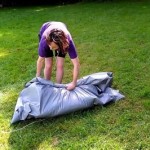What Is Rock Bedding?
Rock bedding is a term used in geology to describe the process of sediment accumulation and lithification, which results in the formation of sedimentary rocks. It involves the deposition of sediments, their compaction, and eventual cementation into solid rock. The bedding planes that form during this process are significant features in sedimentary rocks, providing valuable information about the depositional environment and geological history of the area.
Formation of Rock Bedding
Rock bedding is formed through a series of stages: 1. Sediment Deposition: Sedimentary rocks originate from the accumulation of sediments, which can be transported by various agents such as water, wind, or ice. These sediments consist of particles of different sizes, ranging from clay minerals to boulders. 2. Compaction: As more sediments accumulate, the weight of the overlying layers compresses the lower layers, causing them to become denser and more tightly packed. This compaction reduces the pore space between the sediment particles, expelling water and other fluids. 3. Cementation: Over time, minerals dissolved in the water circulating through the sediments precipitate and fill the remaining pore spaces. This process, known as cementation, binds the sediment particles together, transforming the loose sediment into a solid rock.
Types of Bedding Planes
Different types of bedding planes can form depending on the depositional environment and the characteristics of the sediments. Common types include: 1. Horizontal Bedding: Occurs when sediments are deposited in a flat-lying environment, such as a calm lake or a river delta. The resulting rock layers are parallel to each other, indicating a stable depositional environment. 2. Cross-Bedding: Forms when sediments are deposited in a high-energy environment, such as a river channel or a sand dune. The inclined layers or cross-beds represent the movement of sediments by flowing water or wind. 3. Graded Bedding: Occurs when sediments of different sizes are deposited in a sequence, with coarser particles at the bottom and finer particles at the top. This indicates a change in the energy of the depositional environment, such as a sudden decrease in water velocity. 4. Ripple Marks: Small-scale bedding features that resemble ripples on a beach. They form when currents or waves disturb the sediment surface, creating tiny ridges and troughs.
Importance of Bedding Planes
Bedding planes have significant importance in understanding the geological history of an area: 1. Depositional Environment: The type of bedding and the characteristics of the sediment layers can provide clues about the depositional environment, such as the depth of water, the energy of the currents, and the rate of sediment accumulation. 2. Geological History: Bedding planes can record events that occurred after the deposition of sediments, such as tilting, folding, and faulting. These deformations indicate tectonic activity and provide insights into the geological history of the area. 3. Paleomagnetism: Magnetic minerals in sedimentary rocks can align with the Earth's magnetic field during deposition. By studying the magnetic orientation of the bedding planes, scientists can determine the latitude and orientation of the ancient landmass at the time of deposition.
Conclusion
Rock bedding is an essential aspect of sedimentary geology, providing valuable insights into the formation and history of sedimentary rocks. The study of bedding planes allows geologists to reconstruct past depositional environments, decipher geological events, and understand the long-term evolution of the Earth's surface.

Sample Of Sedimentary Shale Bedding Scientific Diagram
Rocks 3 What Are Joints And Bedding Planes Is Rock Permeability Teleskola

Sedimentary Structures Industry Energy And Technology

Learning Geology Sedimentary Structures

Plane Bedding Geology Is The Way

Cross Bedding Wikipedia

Bedding Plane An Overview Sciencedirect Topics

Cross Bedding In The Navajo Sandstone Geology Rocks Science Nature

Bed Geology Simple English Wikipedia The Free Encyclopedia

Sepm Strata
Related Posts








